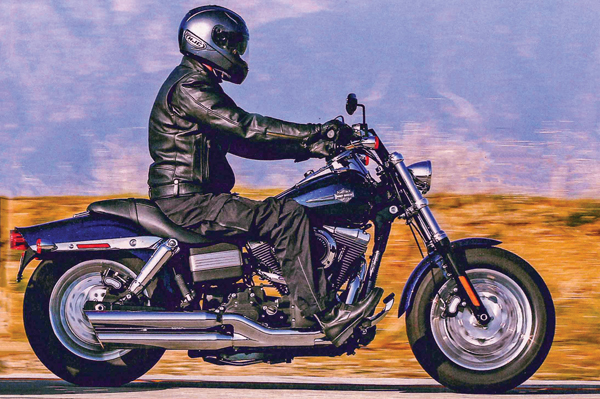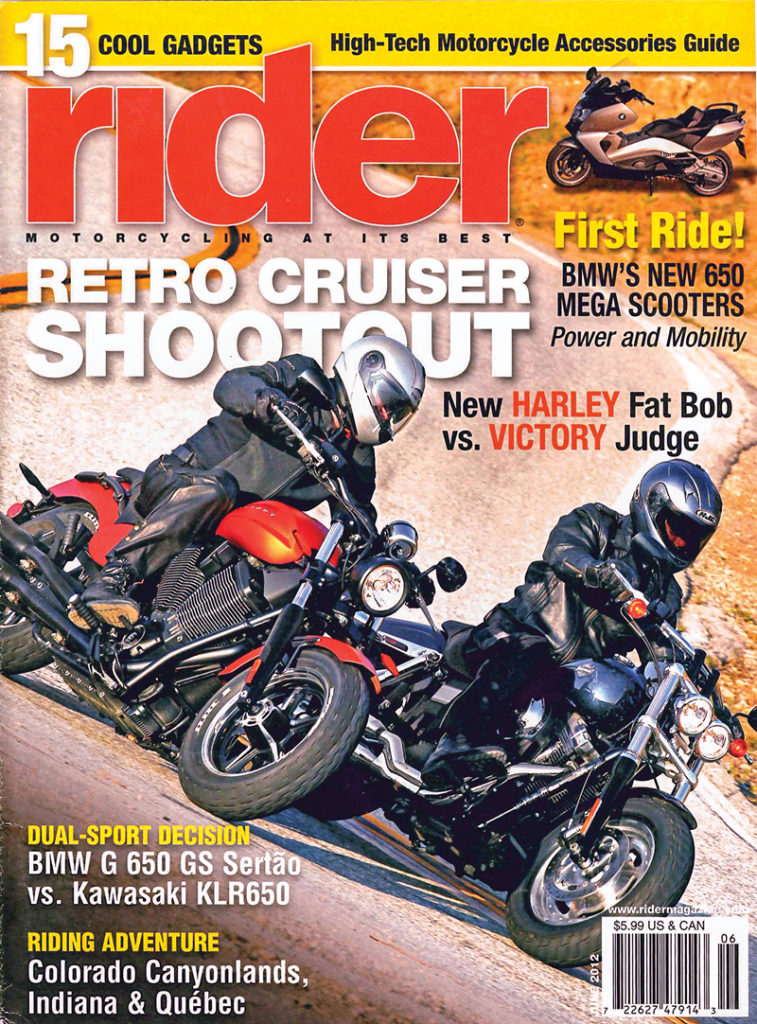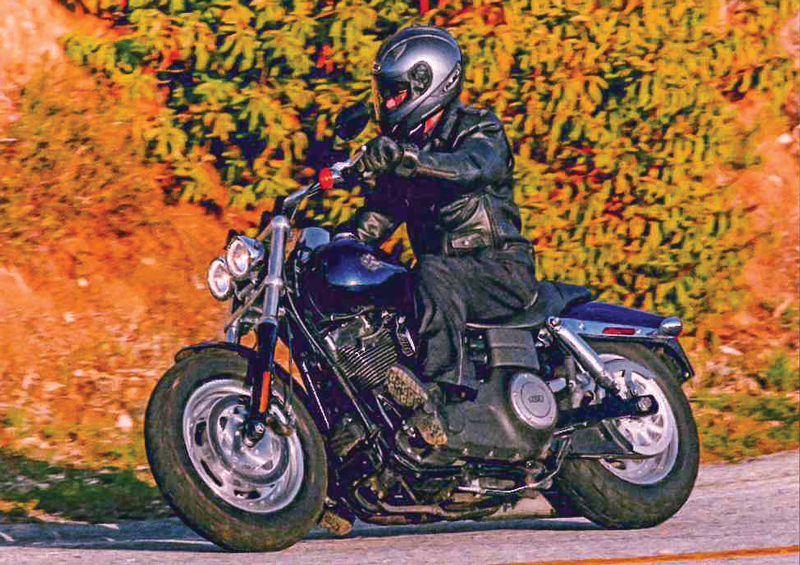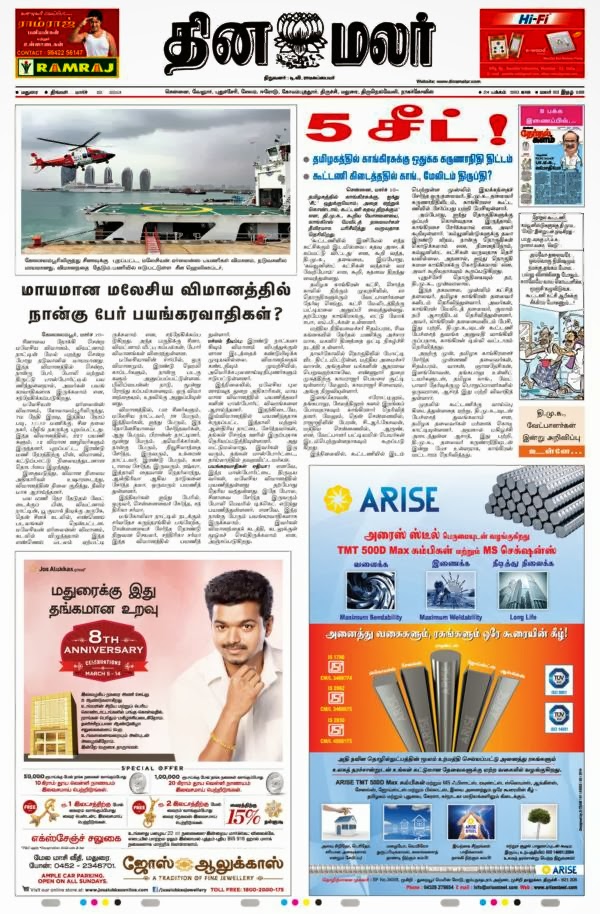2009 Harley Davidson Street Bob Review

The time comes to us all when age and experience send us looking for a change, something less hard-edged and more focused on comfort and a laid-back riding style. For a lot of riders that means boning up on Harleys to see why so many of their peers eventually end up aboard Milwaukee iron. The lucky ones find the FXDF Fat Bob. With a torquey engine, decent if not outstanding suspension and brakes, and a more basic look than some of the brand's gaudier models, it's one of the smoothest transitions into the Harley world from outside.
Introduced in 2008, the Fat Bob came with a Twin Cam 96 engine, and in 2012 got an upgrade to the TC103. Both iterations of the archetypal Harley V-twin put out enough low-end power to launch the big Bob from stoplights with ease, and although neither is a match for high-revving Japanese and European bikes in the upper reaches of the rev range, the Harley is no slouch for a bike its size. The engine's 45-degree cylinder spread, a holdover from the company's early days, is practically a prescription for vision-blurring vibration, but the worst of it is held in check by rubber engine mounts that isolate you from all but the most pleasant mechanical sensations. Harley's maintenance-free belt final drive gives you more time to enjoy the ride, too.

If the Fat Bob has a signature styling lick, it's the slotted disc wheels and fat, wide tires. They take some getting used to if you're accustomed to the sizes used on most other bikes, but they don't take away much from the bike's handling, as long as you accept that you're not on a sportbike or an adventure tourer. With that in mind you'll find braking and cornering clearance sufficient to enjoy a brisk ride down a twisty road. Rougher surfaces, though, highlight the twin rear shocks' dismally short travel, and make you wish as much attention had been lavished on the inside of the front fork as the outside. Still, riders who've sampled both the Fat Bob and other Harley baggers and touring models say the FXDF is probably the best all-day ride in Harley's cruiser fleet, and that with some soft luggage and a quick-detach windscreen it makes a versatile touring mount.
Advertisement

Shopping for a used Fat Bob takes patience, especially if you're looking for a stock(ish) one. The biggest obstacles are "performance" mods that add little to the otherwise bulletproof Twin Cam engine apart from more noise, worse gas mileage and decreased reliability. The FXDF's big draw is its tractability, and you're not likely to improve much on that. Two areas of the chassis–the drive belt and the rubber engine mounts–warrant close inspection. You can inspect the belt visually for holes, tears or other damage, and see if the sides of the belt or the rear pulley are worn, indicating an alignment problem with the rear wheel. But the only way to check the engine mounts is to ride the bike. The rowdy vibes should smooth out just above idle and stay that way until redline.
The market for used Harleys seems to be cooling lately, but you should still expect to see Fat Bobs ranging from $10,000 for an early model with the TC96 engine to $12,500 for the later TC103. Beware the seller who thinks every accessory added to the bike is still worth its retail value on top of the asking price. Service records are nice to have, but a valid title is a must–accept no excuses on this point.

PROS
Strong engine, decent chassis and good reliability, plus a huge dealer network for parts and service.
CONS
Big and heavy with short-travel suspension. Endless "fat" jokes, especially if your name is Bob.
Engine: Air-cooled 45-degree V-twin, 1,570cc (TC96), 1,690cc (TC103)
Final drive: Belt
Weight: 706 lbs.
Fuel capacity: 5.0 gals.
Seat height: 27 in.
2009 Harley Davidson Street Bob Review
Source: https://ridermagazine.com/2019/04/19/re-cycling-2008-2013-harley-davidson-fxdf-fat-bob/


0 Komentar